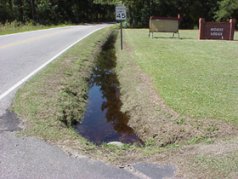Pest Problems After Storms – Mosquitoes
go.ncsu.edu/readext?429151
en Español / em Português
El inglés es el idioma de control de esta página. En la medida en que haya algún conflicto entre la traducción al inglés y la traducción, el inglés prevalece.
Al hacer clic en el enlace de traducción se activa un servicio de traducción gratuito para convertir la página al español. Al igual que con cualquier traducción por Internet, la conversión no es sensible al contexto y puede que no traduzca el texto en su significado original. NC State Extension no garantiza la exactitud del texto traducido. Por favor, tenga en cuenta que algunas aplicaciones y/o servicios pueden no funcionar como se espera cuando se traducen.
Português
Inglês é o idioma de controle desta página. Na medida que haja algum conflito entre o texto original em Inglês e a tradução, o Inglês prevalece.
Ao clicar no link de tradução, um serviço gratuito de tradução será ativado para converter a página para o Português. Como em qualquer tradução pela internet, a conversão não é sensivel ao contexto e pode não ocorrer a tradução para o significado orginal. O serviço de Extensão da Carolina do Norte (NC State Extension) não garante a exatidão do texto traduzido. Por favor, observe que algumas funções ou serviços podem não funcionar como esperado após a tradução.
English
English is the controlling language of this page. To the extent there is any conflict between the English text and the translation, English controls.
Clicking on the translation link activates a free translation service to convert the page to Spanish. As with any Internet translation, the conversion is not context-sensitive and may not translate the text to its original meaning. NC State Extension does not guarantee the accuracy of the translated text. Please note that some applications and/or services may not function as expected when translated.
Collapse ▲
Drainage ditches clogged with storm debris fill with water and become mosquito breeding sites.
Depending upon the time of year and where you live, mosquito problems following major storms may range from minor to severe. Heavy rains and storm damage create attractive breeding sites for species of mosquitoes that remain active until late fall.
The number of mosquitoes may seem lower at first when heavy rains and flooding actually flush mosquito eggs and larvae out of many breeding sites. However, warm summer or early fall temperatures will help lead to increased mosquito populations in 10-14 days. Debris-filled drainage ditches become ideal mosquito habit Uprooted trees, erosion, and the activity of vehicles and heavy equipment create holes and depressions in the soil that can quickly fill with organic debris and water that stagnates over days. Although many of these temporary water sources dry up, widespread flooding creates some persistent pockets of stagnant water which are likely to become mosquito breeding grounds.

Water-filled pet bowls or other containers will attract mosquitoes
As you begin cleaning up your property, include time to do the following:
- Overturn or empty objects that have collected stormwater. If you’re hauling debris to a landfill or trash collection center, now is also a good time to get rid of some of these unwanted containers.
- Clear debris from roof gutters and downspouts so that rainwater drains properly. You can also check for previously unnoticed storm damage or wood-decay.
- Remove water that collects on sagging tarpaulins or other covers on your house or property.
- Clear silt and storm debris from drainage ditches and storm drains so that water flows out and does not stagnate.
- Fill in holes left by uprooted trees, vehicles or heavy equipment.
- Larger water-filled holes and objects, such as swimming pools that become stagnant from lack of maintenance can be treated with an insecticide containing the bacteria Bacillus thuringiensis israelensis (Bti) which does not pose a hazard to animals.
- In drier areas of the yard, spraying the shrubs where mosquitoes rest will reduce the mosquito population somewhat, but it is not likely to have a significant effect, particularly if your neighbors do not take any steps to reduce breeding sites as well. Some mosquitoes species travel 100 yards or less while others can fly one-quarter mile or more in search of blood meals. Be very careful when spraying yards. Make sure that the pesticide does not drift into neighboring properties. Check before you spray and watch out for children or pets. Do not spray vegetables and other edible plants unless the pesticide you use is labeled for that type of use. Also, most products require that you avoid spraying when bees and other pollinators are visiting flowering plants. If your community has severe mosquito populations, contact your local Health Department to find out if any area-wide spraying is being planned.
- Personal protection is absolutely critical. If you lose electricity and need to keep your windows open, make sure the window screens are seated properly. Staying indoors is one way to avoid mosquitoes, although this is usually not possible or practical if you are active in cleanup and repair efforts. Wearing long-sleeved shirts and long pants can also help (although it may be uncomfortable). Chemical repellents, such as products containing Deet, are still the best option for personal protection outdoors. Repellents should only be applied to bare skin (never under clothing). You can also buy chemically-treated clothing but those items should be washed separately from your regular laundry. Children and pregnant women should use small amounts (and the lowest concentrations) of these repellents.
For additional information, see:



